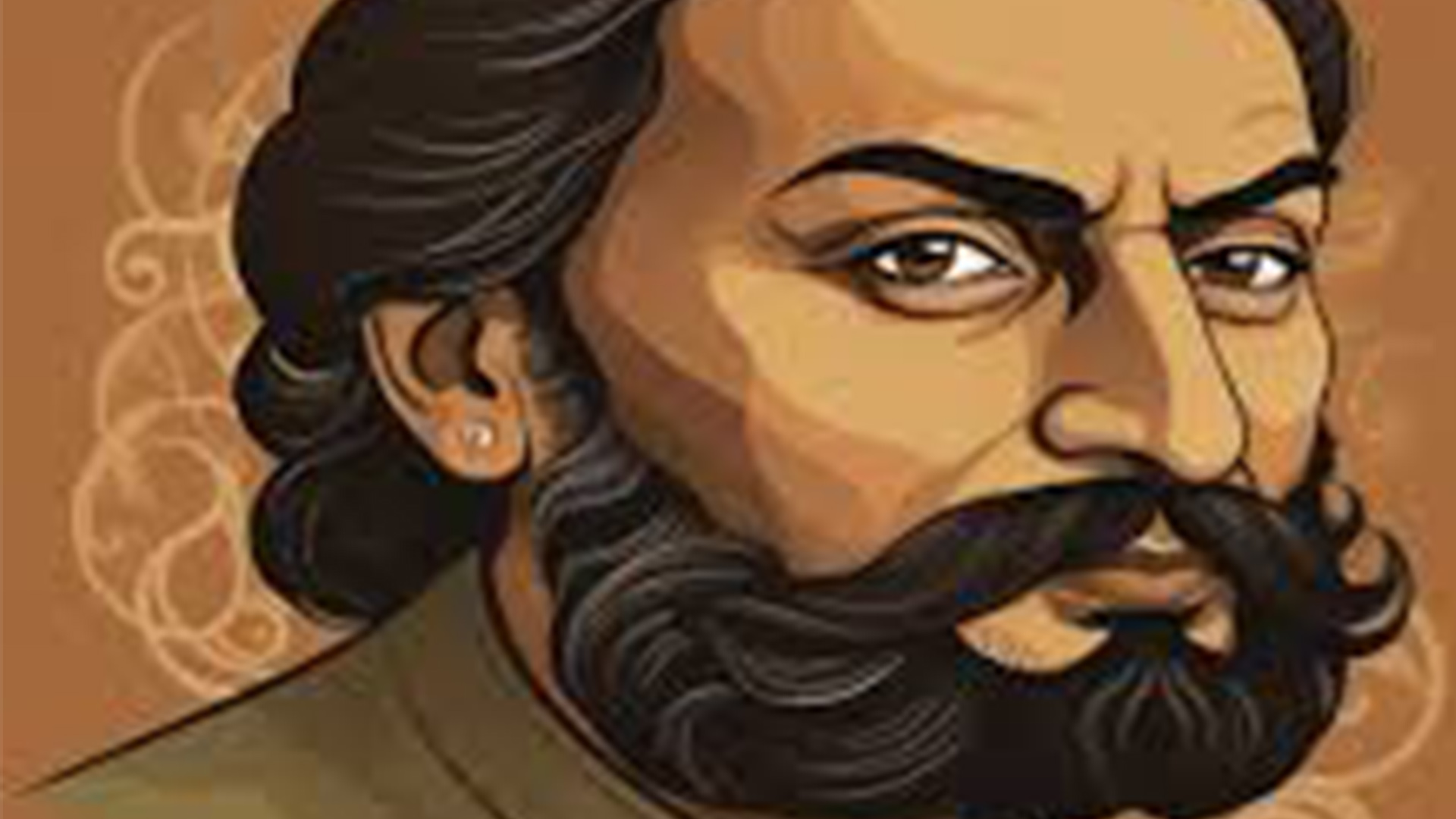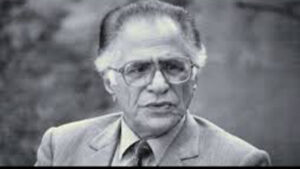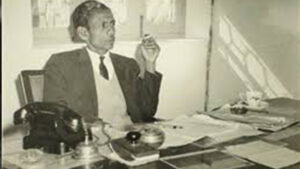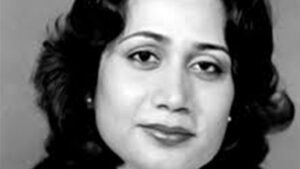Mir Muhammad Taqi, commonly known as Mir Taqi Mir, was a famous Urdu poet from 18th century Mughal India. He is considered one of the pioneers who helped shape the Urdu language. He was a key figure in the Delhi School of Urdu ghazal and is regarded as one of the greatest Urdu poets. His pen name was “Mir.” Later in life, he moved to Lucknow, where he served at the court of Asaf-ud-Daulah.
Mir Taqi Mir’s father was Meer Muttaqi. After his father’s death, his stepbrothers took control of his property. He was raised by his step-uncle after being orphaned. Following his step-uncle’s death, his maternal step-uncle took care of him. Throughout his life, Mir Taqi Mir expressed deep sorrow, particularly in his poetry, which often reflected his grief over the decline of his beloved city, Delhi.
Life
The primary source of information about Mir Taqi Mir’s life is his autobiography Zikr-e-Mir, which spans his childhood up until his early years in Lucknow. However, this work is said to obscure as much as it reveals, with much of the material being undated or presented out of chronological order. As a result, many aspects of Mir’s life remain speculative.
Early Life and Background
Mir Taqi Mir was born in Agra, India (then called Akbarabad) in August or February 1723. His grandfather had migrated from Hejaz to Hyderabad and later to Agra. Mir’s father, Mir Abdullah, was a religious man who influenced his son’s philosophy of life. His father’s emphasis on love and compassion shaped Mir’s poetry. After his father’s death in Mir’s teenage years, which left the family in debt, Mir moved to Delhi to continue his education and seek financial support. He was assisted by various patrons, including the Mughal Amir-ul-Umara and Khan-i Dauran, who gave him a daily allowance.
Some of Mir’s early works, such as his masnavis Mu’amlat-e-ishq (The Stages of Love) and Khwab o Khyal-e Mir (“Mir’s Vision”), are considered to reflect his personal experiences with love and heartbreak, though the autobiographical nature of these poems is debated.
Life in Lucknow
Mir spent much of his life in Delhi, living in Kuchha Chelan, Old Delhi. However, after the repeated sackings of Delhi by Ahmad Shah Abdali starting in 1748, he eventually moved to Lucknow in 1782 at the invitation of Asaf-ud-Daulah, the ruler of the region. Mir, devastated by the destruction of his city, expressed his sorrow in his poetry. One of his famous couplets reflects this:
“What could the inhabitants of the East know of us? Laughing and calling us poor, in their ignorance. Delhi, once the chosen city of the world, Where the elite of the world once lived, Now ravaged and deserted by the heavens, We dwell in the ruins of this abandoned land.”
In Lucknow, Mir faced a growing sense of alienation. While he was initially welcomed by Asaf-ud-Daulah, he found himself at odds with the court, which considered him old-fashioned. He dismissed the new style of Lucknow poetry, criticizing poet Jur’at’s works as trivial. Over time, Mir’s relationship with his patron soured, and he eventually distanced himself from the court. In his later years, he became isolated, suffering from poor health and the grief of losing his daughter, son, and wife.
Death
Mir Taqi Mir died on 21 September 1810 from an overdose of purgative medicine and was buried in Lucknow. The exact location of his grave is unclear, as it is believed that the marker was removed during the construction of railway tracks. In the 1970s, a cenotaph was erected near the burial site with the help of Maqbool Ahmed Lari, the founder of the Mir Academy in Lucknow.
Literary life
Mir Taqi Mir’s complete works, known as Kulliyat, consist of six Diwans with 13,585 couplets. These works encompass a range of poetic forms, including ghazals, masnavis, qasidas, rubais, mustezaad, and satire. However, his literary reputation is most strongly associated with his ghazals, particularly those in Kulliyat-e-Mir, many of which explore themes of love. His Masnavi Mu’amlat-e-Ishq (The Stages of Love) is regarded as one of the greatest love poems in Urdu literature.
Mir lived during a time when Urdu poetry was still evolving. His natural aesthetic sense allowed him to blend indigenous expressions with Persian influences, contributing to the development of the language known as Rekhta or Hindavi. He used his native Hindustani as a base, incorporating Persian phrases and diction to create a poetic language that was simple, elegant, and natural. This style influenced generations of future poets.
Much of Mir’s poetry is marked by deep pathos and melancholy, stemming from personal tragedies, such as the loss of his family, and the trauma of witnessing the destruction of Delhi. These experiences gave a sorrowful tone to much of his work.
Mir was encouraged to write poetry in Urdu by Syed Sadaat Ali, a Sayyid from Amroha. He recalls:
“A Sayyid from Amroha convinced me to write poetry in Urdu, a language gaining prominence under the authority of the king. I worked tirelessly to master it, and soon my poetry became well known, reaching both the young and old in the city.”
Famous couplets
Here are some of Mir Taqi Mir’s notable couplets:
- Hasti apni habab ki si hai
Yeh numaish ik saraab ki si hai
My life is like a bubble,
This world is like a mirage.- Dikhaai diye yun ki bekhud kiya
Hamein aap se bhi juda kar chale
She appeared in such a way that I lost myself
And went away taking my ‘self’ with her.
— This can also be interpreted spiritually:
When I saw You (God) I lost all sense of self,
I forgot my own identity.- Gor kis diljale ki hai ye falak?
Shola ek subah yahaan se uthta hai
What heart-sick sufferer’s grave is the sky?
An ember rises here at dawn.- Ashk aankhon mein kab nahin aata?
Lahu aata hai jab nahin aata
From my eye, when doesn’t a tear fall?
Blood falls when it doesn’t fall.- Bekhudi le gai kahaan humko,
Der se intezaar hai apna
Where has selflessness taken me?
I’ve been waiting for myself for long.- Raah-e-door-e-ishq mein rotaa hai kyaa
Aage aage dekhiye hotaa hai kyaa
In the long road of Love, why do you wail?
Just wait and watch how things unveil.- Deedani hai shikastagi dil ki
Kya imaarat ghamon ne dhaai hai
Worth-watching is my heart’s crumbling,
What a citadel have sorrows razed.- Baad marne ke meri qabr pe aaya wo ‘Mir’
Yaad aai mere Isa ko dawa mere baad
O Mir, he came to my grave after I died,
My messiah thought of a medicine after I died.- Mir ke deen-o-mazhab ka poonchte kya ho un nay to
Kashka khaincha dair mein baitha kab ka tark Islam kiya
What can I tell you about Mir’s faith or belief?
A tilak on his forehead, in a temple he resides, having abandoned Islam long ago.These verses are not just reflections on love and sorrow, but also convey spiritual and existential themes, blending deep personal anguish with a broader sense of the divine and human experience.
Mir Taqi Mir in Fiction
- Khushwant Singh’s Delhi: A Novel: This famous novel by Khushwant Singh delves into the life and adventures of Mir Taqi Mir, offering a fictionalized account of the poet’s experiences in the backdrop of 18th-century Mughal Delhi.
- Mah e Mir (2016): A biographical film directed by Anjum Shahzad, Mah e Mir features Fahad Mustafa as Mir Taqi Mir. The film brings to life the poetic journey and the emotional turmoil of the poet in a dramatized manner.
Major Works of Mir Taqi Mir
- Nukat-us-Shura: A biographical dictionary in Persian, this work provides insights into the lives of Urdu poets from Mir’s era.
- Faiz-e-Mir: A collection of five stories about Sufis and faqirs, believed to have been written for the education of Mir’s son, Mir Faiz Ali.
- Zikr-e-Mir: An autobiography written in Persian, this is the primary source of information about Mir’s life. However, it is noted for being somewhat obscure and incomplete in its chronological details.
- Kulliyat-e-Farsi: A collection of Mir’s poetry written in Persian.
- Kulliyat-e-Mir: The complete collection of Mir’s Urdu poetry, which includes six diwans (volumes) and remains the cornerstone of his literary reputation.
- Mir Taqi Mir Ki Rubaiyat: A collection of Mir’s rubaiyat (quatrains), showcasing his versatility and depth in expressing profound thoughts in short poetic form.
These works together encapsulate Mir’s vast contribution to Urdu and Persian literature, reflecting both his artistic prowess and his philosophical depth.



